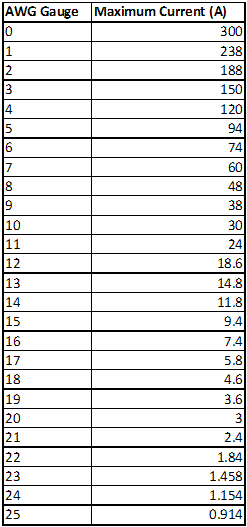Here is what I learned that is the most important.
I cut it from another site I found, that deals with auto electric.
1. Calculate your wire size attached to the fixture (many come with a few inches of connection wire).
2) Use the following table to determine the maximum current for whatever wire gauge is being used.

3) Take the maximum current value obtained from the table and find the largest fuse you can find that still falls within the limitations. DO NOT EXCEED THE VALUES ON THIS TABLE! Common automotive blade-style fuses exist at 5A-20A in 5A Increments. Ex: 5A,10A,15A,20A
Determining the Total Amperage of your Circuit
Current is measured in Amperes, abbreviated to Amps or just the letter A. Because of the low-current nature of LEDs, many have current listed in milliamperes (or mA for short).
1A is equal to 1000mA
To find the total amperage in your specific installation, refer to the table below. Find the items that you are installing and their current requirements. Add the values and divide by 1000 to get your total current in Amps. You can use this value in the table above to determine the minimum wire size required.
Here's an example.
Say you bought a cold cathode kit for each side of the dash (2 Transformers), 5 superflux LED's for your vents, and a 4.7" Flexible LED strip for your center console.
If you want to put all of these on a single circuit, you'll need to know the current. Based on the table above, each transformer draws 700mA, each Superflux LED draws 80mA, and the LED strip draws 80mA
If you add up (700*2)+(80*5)+(80*1) you would get 1880mA total.
Divide this by 1000 to come up with 1.88A.
Put 1.88A into the top table in this post. That table tells you that you should have no smaller than 21 gauge wire for your circuit.
Personally I would go with the 20 gauge wire and a 2.5A fuse.
 hello everyone im putting all led lights on or in my teardrop and i was reading through sdtripper2's index about wire size and fuse sizes found some very cool stuff,,,but on led's should i still use 16ga wire some of the led's come with wire pretty small stuff im guessing 22ga, would it be ok to use the same gauge or should i use the 16 ,,,,one more i dont know the watts or amps cant imagine they are very big,,,the chart i saw in the index only went down to 16ga when it came to choosen a fuse size. maybe 7.5 amp for 22ga thanks ahead of time this is a very helpful sight for
hello everyone im putting all led lights on or in my teardrop and i was reading through sdtripper2's index about wire size and fuse sizes found some very cool stuff,,,but on led's should i still use 16ga wire some of the led's come with wire pretty small stuff im guessing 22ga, would it be ok to use the same gauge or should i use the 16 ,,,,one more i dont know the watts or amps cant imagine they are very big,,,the chart i saw in the index only went down to 16ga when it came to choosen a fuse size. maybe 7.5 amp for 22ga thanks ahead of time this is a very helpful sight for  somebody building their first tear
somebody building their first tear



